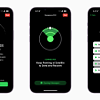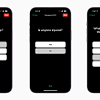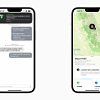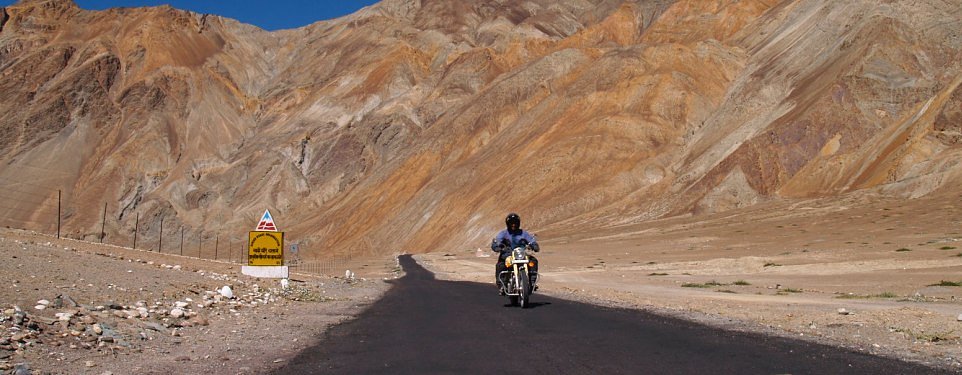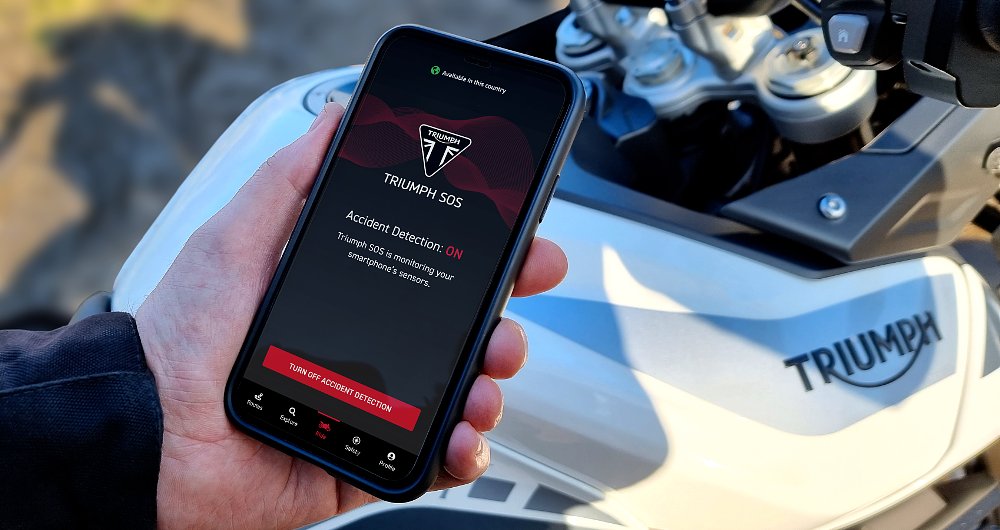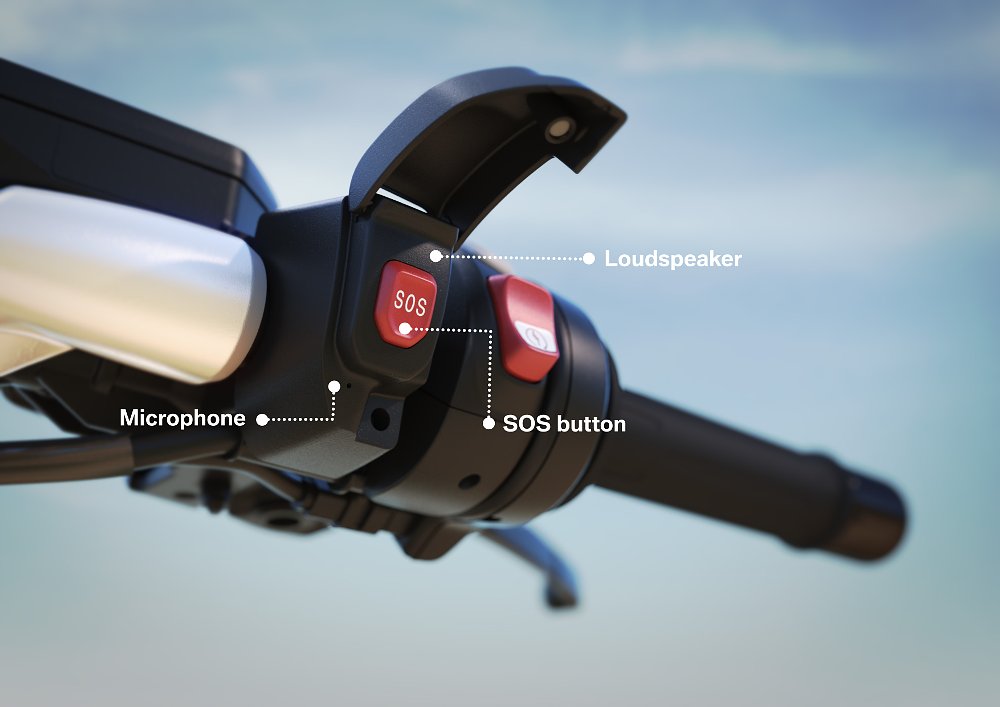Apple just debuted its new Emergency SOS via Satellite for the iPhone 14 line, which includes the iPhone 14, 14 Plus, 14 Pro, and 14 Pro Max. This feature can contact 911 when users don’t have access to cell service.
The iPhone’s satellite SOS could be an alternative to standalone satellite-based devices from manufacturers like SPOT and Garmin for riders who need the ability to communicate or call for help in remote areas, but there are a few big differences to consider. Apple also includes a non-emergency SOS feature that might come in handy for riders who want to let friends and family know where they are… without bothering emergency services or accidentally calling in a rescue helicopter.
Let’s take a closer look at what Apple’s satellite SOS is, and isn’t, from a motorcyclist’s perspective.
Emergency SOS via Satellite: How it works
The iPhone 14’s SOS function can send text-based messages from just about anywhere in the United States and southern Canada. (More specifics on that later.) The SOS message, which includes the user’s geographic location, bounces off one of 24 low-Earth-orbit satellites and is received by a ground station. That station passes the information along to a relay center. From there, the message is directed to the closest emergency services dispatch center, and emergency responders will use your last known location to guide their assistance.
Simply dial 911 to start the process. The phone will attempt to connect to cell towers, and if there aren’t any available, the system asks if the user would like to “try Emergency Text via Satellite.” Apple asks some basic questions and sends the answers along with your location and altitude. Do you need help, or are you requesting help for someone else? How are you breathing? Do you have any medication with you? Your emergency contacts can also be notified at this time so they can stay up to date with your situation, but you’ll need to add their information before wandering into areas without service. Preemptively fill out your medical ID in the phone, too, so that it can be sent along with the rest of the vital info.

Dialing 911 isn’t the only way that satellite SOS will begin connecting. In an area without cell reception, the iPhone 14 will automatically try to reach a satellite when you press and hold the phone’s top two buttons. Automatic crash detection using the iPhone’s accelerometer, gyroscope, barometer, and microphone will also start the search for a satellite. Finally, a connected Apple Watch can also begin the SOS process.
No matter how the system is triggered, the iPhone needs a satellite connection. The SOS system asks the user to adjust the phone’s position for the best connection. If a satellite is not available, you’ll be able to see when the next one will pass within range, and the phone will still get the message out eventually without any position adjustment. So, yes, it’ll still work if the 500-pound adventure bike that just fell on you is restricting your arm movement. The message will just take a few more minutes to send. (Auto-SOS can be disabled in a menu if you’d like to keep this process fully manual.)

“Providing Emergency SOS via satellite is an important breakthrough that will save lives. The critical work being done by Apple to create innovative new solutions to support 911 providers and first responders is a huge step forward in protecting Californians and the broader public during an emergency situation,” said Mark Ghilarducci, the California Governor’s Office of Emergency Services’ director.

Satellite connection: Not just for emergencies
Apple Find My also works over the satellite connection. If you aren’t familiar with Find My, it allows trusted contacts to see the location of your device. This will need to be done manually for each location update, but it provides an easy way to let others know where you are, even in remote areas. Emergency services are not involved at all with this process. You’re simply checking in with others to let them know where you are. This might be a helpful feature while riding a Backroads Discovery Route or touring across a desert. (Keep in mind that it's not possible to send anything other than location data to your contacts over satellite.)
There’s another non-emergency feature built in you might want to try. It’s a good idea to be familiar with the satellite SOS feature before you need it, so a test mode allows users to explore the SOS process without actually contacting 911. Motorcyclists might use this to check satellite connectivity when scouting a new riding area, for example.
Limitations you need to know
SOS and location sharing aren’t primary features of the iPhone 14 series, so the devices’ ability to reach a satellite can’t match dedicated units like Garmins or SPOTs. SOS may have limited or nonexistent connection in locations with lots of obstructions, like dense trees, mountains, and urban areas with tall buildings. Also, the iPhone 14’s satellite SOS does not work indoors. Apple recommends finding an area with a clear, unobstructed view of the sky for best results. This may not be possible if you are injured, or unable to find a clearing.
Currently, satellite SOS is not globally available. Apple only offers it for the United States (including Hawaii), Canada, and some U.S. territories. While a few more countries will be added next year, get a standalone satellite unit if you're going to ride around the world.

Free SOS… for now
This service is free to iPhone 14 users for the next two years. After that, Apple has not commented on what satellite SOS might cost. On one hand, nobody would be surprised if Apple started offering an SOS subscription or a more expensive SOS-enabled model. However, charging for a safety feature isn’t great for optics, and free SOS on all devices could sway customers away from competitors that do not offer the service. Apple’s decision may not even matter to iPhone 14 customers. Many iPhone users keep their phones for two or three years before upgrading.
Can the iPhone 14 replace a Garmin, SPOT, or other satellite device?
That depends on how you’re going to use it. The iPhone 14 is dust- and water-resistant, but Garmin and SPOT units have more rugged construction and better connection overall. You’ll need to pay for the improved service, though, with a subscription plan for the standalone units.
Access to the device after a crash is another consideration. Dedicated satellite units can be worn on the outside of a jacket or mounted to your motorcycle. Smartphones (especially their cameras) are susceptible to vibration damage when mounted to a motorcycle, so the iPhone 14 should ride along in a tank bag or waterproof pocket. These locations will be a little harder to reach if you’re injured.
Based on Apple’s specs and video, the iPhone 14 would be a solid choice for road-biased riders who are already considering a new iPhone. The added safety net is probably worth the premium over an iPhone 13, especially if folks back home want to know that you’re safe and sound each day.
For hardcore ADV and dirt riders, a dedicated unit will be more likely to survive the spills and abuse of off-road riding, although an iPhone 14 would be a fantastic backup option. You might want to check the auto-SOS settings, though, because a harmless wipeout might look like a life-threatening incident to the iPhone. The latest generation of standalone satellite devices will also offer longer battery life, helpful features like waypoint tagging, navigational capabilities, and worldwide functionality.
A long way from ··· --- ···
Hopefully, the iPhone 14 is the first of many phones to offer safety features beyond the limitations of cell tower connections.
“Some of the most popular places to travel are off the beaten path and simply lack cellular coverage. With Emergency SOS via satellite, the iPhone 14 lineup provides an indispensable tool that can get users the help they need while they are off the grid,” said Greg Joswiak, Apple’s senior vice president of Worldwide Marketing. "Emergency SOS via satellite is a breakthrough service available only on the iPhone 14 lineup, and a new innovation that we hope will provide our customers some peace of mind.”
Say what you will about Apple’s other products, features, and business practices, but advancing SOS for smartphones should be applauded. Expect more SOS advancements over the next few years as phones, motorcycles, and moto-related gadgets become even more powerful.

 Membership
Membership


